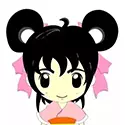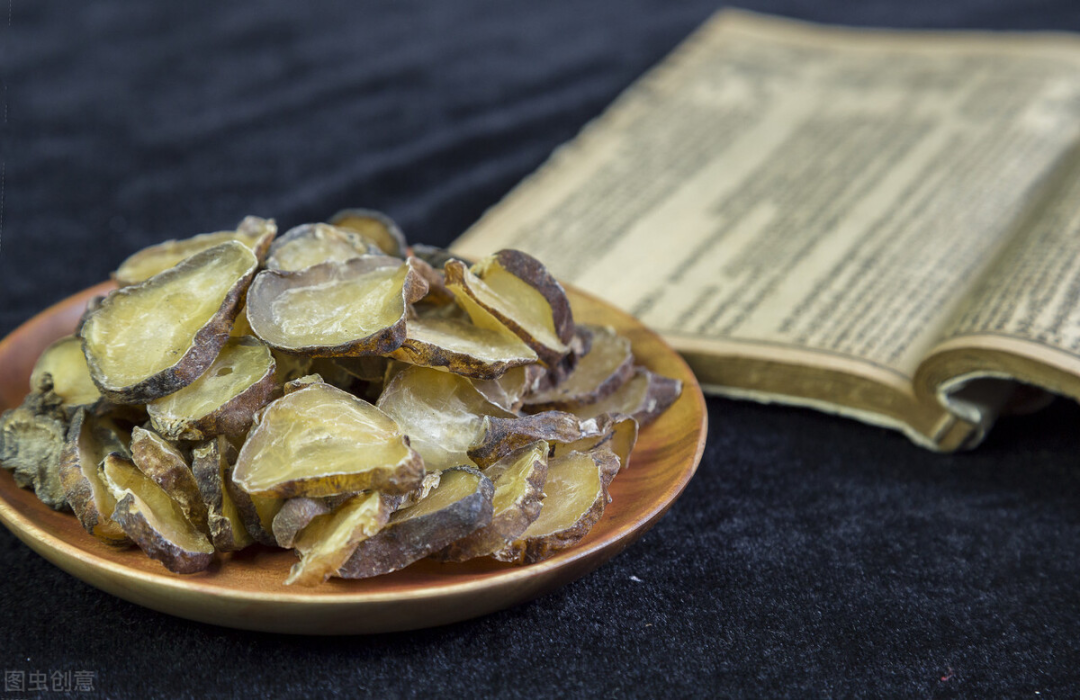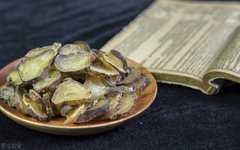
Editor: Xiao Yaotong
Written while caring for a pothos in Beijing
Fuzi (Aconite), is classified as a warming interior medicine and is known as the “first remedy for reviving yang and rescuing from reversal” in traditional Chinese medicine (TCM). Its functions and indications include: reviving yang and rescuing from reversal, tonifying fire and assisting yang, dispelling cold and alleviating pain. This article shares the author’s clinical experiences with Fuzi, discussing its duration of use and seasonal application, which are worth referencing.
▍The full text contains1835words, estimated reading time:5minutes
 Fuzi is an important herb for supporting yang, capable of warming and tonifying kidney yang, invigorating heart yang, and dispelling deep-seated cold. Here, I will discuss my experiences with the application of Fuzi.
Fuzi is an important herb for supporting yang, capable of warming and tonifying kidney yang, invigorating heart yang, and dispelling deep-seated cold. Here, I will discuss my experiences with the application of Fuzi.
01
Fuzi for Acute Febrile Diseases
“Shang Han Lun” (Treatise on Cold Damage) is a classic text on treating febrile diseases, where the Shaoyin disease with four reversals is characterized by weak yang qi and cold extremities. Zhang Zhongjing emphasized the use of Fuzi to revive yang and rescue from reversal.Currently, in clinical practice, when encountering severe acute febrile diseases, Western medicine is often used for emergency treatment, while Fuzi in TCM is rarely considered, except in injectable forms (such as “Fuzi No. 1”) for treating arrhythmias (often due to myocarditis or other causes of bradyarrhythmia). In cases of acute infectious diseases, Fuzi is seldom thought of.For example, in measles, it is generally considered a heat toxin, primarily treated with cooling and dispersing methods, but when measles pneumonia is complicated by heart failure, Fuzi can be added to warm yang and strengthen the heart; for diphtheria, the treatment focuses on nourishing yin and clearing heat, but when diphtheria toxins cause toxic myocarditis leading to cardiac crisis, Fuzi must be added to the nourishing yin and clearing heat formula to strengthen the heart and prevent collapse.Years ago, while accompanying my father in clinical practice, I encountered a child with measles whose complexion was pale and ashen, with rashes that did not surface, and also had diarrhea. I used Fuzi combined with Shengma (Bupleurum), Gegen (Kudzu root), Yinhua (Honeysuckle), Lianqiao (Forsythia), and Jingjie (Schizonepeta) to clear heat, detoxify, and disperse, saving many children, which left a deep impression on me.
02
Fuzi for Dehydration
Cholera and vomiting/diarrhea can lead to dehydration, requiring fluid replenishment.We believe that vomiting and diarrhea injure yin, leading to symptoms of dryness and emaciation, which indeed manifest as obvious yin deficiency, but yang also becomes deficient, as indicated by cold hands and feet, and a weak, thin pulse.Sometimes, replenishing yin can actually worsen diarrhea; at this time, using Fuzi to regulate the middle is the fundamental solution.Before the founding of New China, we treated many cases of pediatric summer heat syndrome, characterized by excessive thirst and urination, using a method of clearing above and warming below, which was very effective. The upper clearing used gypsum, Huanglian (Coptis), and Lianzi (Lotus seed heart), while the warming below primarily used Fuzi.

03
Fuzi for Jaundice Hepatitis
Patients with jaundice may have yellow urine, but this does not necessarily indicate damp-heat.Many jaundice patients exhibit significant fatigue, poor appetite, nausea, and a thin, slow pulse. We often use Yinchenhao Decoction (Artemisia capillaris Decoction) and Yinchen Fuzi Ganjiang Decoction (Yinchen with Aconite and Dried Ginger Decoction) for treatment.When dampness transforms into heat, we can also increase the dosage of Huangqi (Astragalus), even if the stools are loose, with the aim of expelling the pathogen from below and accelerating the resolution of jaundice.
04
Fuzi for Blood Disorders
Fuzi and Guizhi (Cinnamon twig) are both warming herbs, but Guizhi is more dynamic, while Fuzi can both move and stabilize. Therefore, Fuzi is not contraindicated in blood disorders, and can even be used in cases of significant bleeding based on the principles of replenishing qi and the interdependence of yin and yang.However, if there are obvious symptoms of excess heat, such as a flushed face and a strong pulse, Fuzi should not be used; otherwise, it can be combined with bleeding-stopping herbs like Qian Cao (Rubia) and Huaihua (Sophora flower).For patients with bronchiectasis who experience hemoptysis, I also do not avoid Fuzi, often using it alongside herbs that transform phlegm in the lungs, while warming kidney yang with Fuzi, and using Huangqin (Scutellaria) and Qian Cao to clear the lungs and stop bleeding, ensuring that the airways are unobstructed and the blood vessels are smooth, thus stopping the bleeding.
05
Fuzi for Hypertension
Many patients with hypertension exhibit a thin pulse and frequent nighttime urination, especially in stages two and three of the disease. These patients often present with “excess above and deficiency below.”Fuzi warms the lower body, often alleviating the “excess above,” which is known as “drawing fire back to the source.” Of course, depending on the diagnosis, it can also be combined with herbs like Cizhu (Magnetite), Shijue Ming (Abalone shell), Nv Zhenzi (Ligustrum), and Hainianhua (Eclipta) or Huangqin and Dilong (Earthworm) to pacify the liver, clear heat, and nourish yin.If the patient’s pulse is wiry, slippery, and strong, with a flushed face and coarse breathing, Fuzi is not appropriate.
06
Duration of Fuzi Use
Fuzi is toxic, primarily manifesting as myocardial damage leading to arrhythmias.According to the principle in the “Neijing” (Inner Canon) that “great toxicity treats disease, six out of ten should be avoided,” Fuzi is indeed not suitable for long-term use.However, in practice, Fuzi, when properly processed, especially after being boiled for a long time, has most of its toxicity destroyed while retaining its therapeutic effects.In clinical practice, I have used Fuzi for decades without a single case of poisoning; some patients have taken Fuzi long-term without any signs of accumulation.For instance, many residents in Yunnan and Sichuan consume large amounts of Fuzi in meat dishes during winter, and they have developed a high tolerance to it.Even those with a yang-deficient constitution rarely experience toxic or side effects from long-term Fuzi use.Therefore, the duration of Fuzi use is also related to regional and constitutional factors.
07
Seasonal Use of Fuzi
Some believe that Fuzi, being warm and hot in nature, is suitable for use in winter when it is cold, but not appropriate in summer when it is hot. In fact, just as cold and cool herbs can be used in winter, warm and hot herbs can also be used in summer; they should be used as needed, as the saying goes, “there is no harm in using what is needed.”For example, in summer, excessive sweating due to heat can injure qi and even lead to loss of yang; at this time, Fuzi is necessary.In summary, the application range of Fuzi is very broad, with its primary function being to support yang.Fuzi not only dispels deep-seated cold but also subdues false heat, drawing fire back to the source; when used with qi tonics, it can restore lost yuan yang; when used with blood tonics, it can rescue yin; when used with diaphoretics, it can open the pores; when used with dampness-resolving herbs, it can transform water dampness; and when used with heat-clearing herbs, it can drain fire and regulate yin and yang.Therefore, when I use Fuzi, it is not always necessary to have all symptoms of kidney yang deficiency present.For typical yang-deficient patients, Fuzi should certainly be used; for those where Fuzi can be used or not, as long as there are no specific contraindications, I believe it can also be used.However, if there are clear contraindications for Fuzi, it should not be used.

Everyone is watching

Experience Formulas for Chronic Prostatitis

Winter is the peak season for children with Mycoplasma pneumonia; sharing four typical cases of TCM treatment methods
— THE END —
▍Copyright Statement:
▶Articleexcerpted from“Xu Zhongcai’s Medical Cases and Theories Collection,” published by China Traditional Chinese Medicine Press, February 2010; originally published in TCM Journal, 1986, (10): 23~24.Source: Xiao Xiangru Channel.Image source: Tuchong Creative.
▶This platform aims to disseminate knowledge of TCM culture, and copyright belongs to the relevant rights holders. If there are any improper uses, please feel free to contact us for negotiation.
▶This article involves formulas and medicines that should be used under the guidance of a professional TCM practitioner; do not self-medicate.

Click to support TCM





